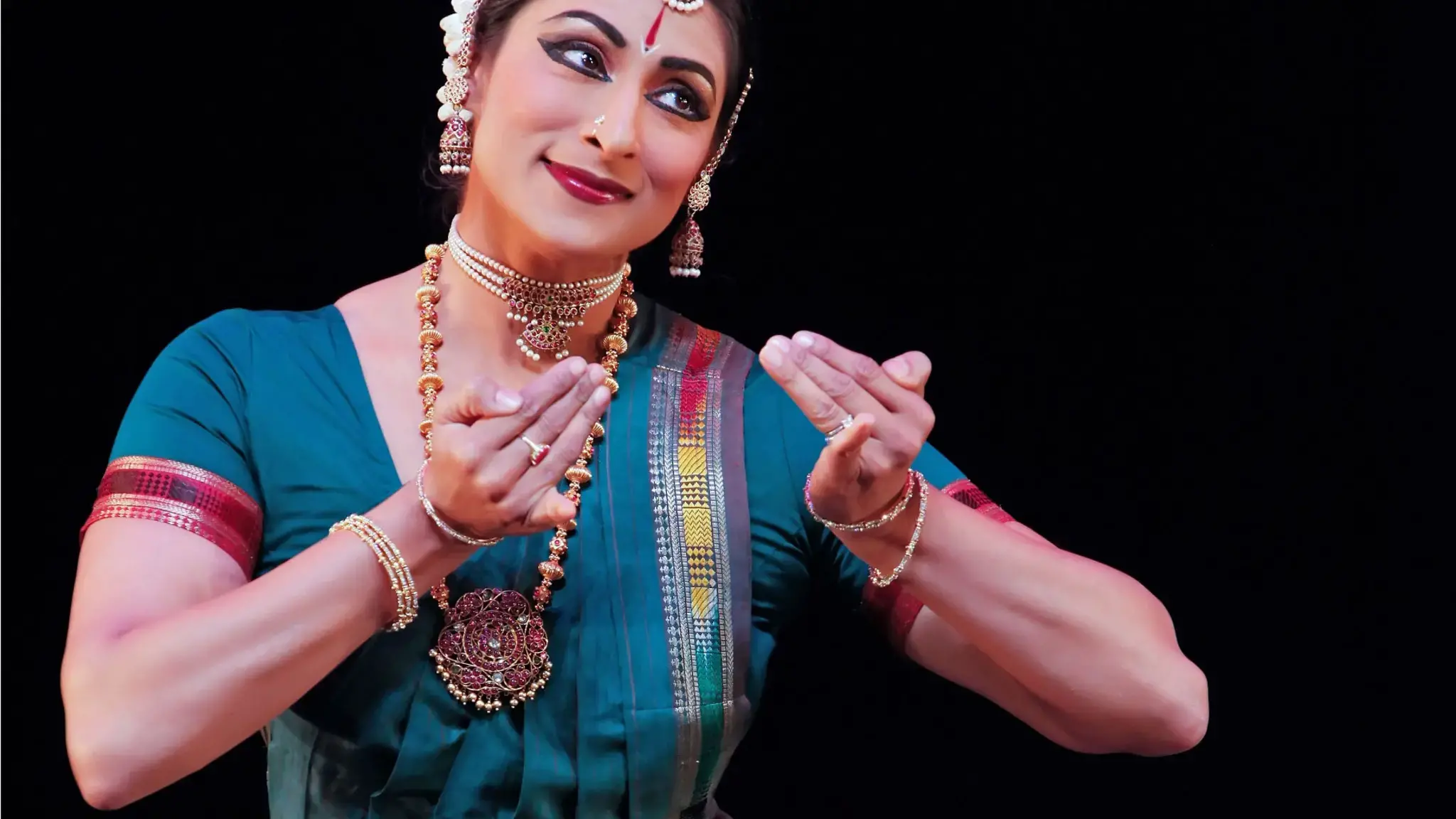

This is the fifth entry in Act I of Push Me, Pull You, the Center’s series on (co-)authorship. For a full list of posts in this series, visit the main Push Me, Pull You page.
Krithika Rajagopalan is associate artistic director and principal dancer of Natya Dance Theatre, one of the leading Indian dance companies in the United States, based in the Chicago area. Natya’s work is rooted in the dance technique of Bharata Natyam, a codified classical dance form said to date back to 1000 B.C. One of Rajagopalan’s primary gurus, or teachers, is her own mother, Hema Rajagopalan, who brought her expertise in Bharata Natyam from India to the U.S. in the mid-1970s. As a little girl, Rajagopalan met many of Indian dance’s major artists and scholars. As part of her work with Natya, Rajagopalan is involved in the creation and performance of many new works, some of which are collaborations with Western-style modern dance troupes, such as Chicago’s Mordine + Company Dance Theatre. Her own perspective on co-authorship is one that stands in relation to a time-honored form, which has been passed along and shaped by so many minds and bodies over centuries, and yet strives to remain contemporary.
In your particular art form, who is the “author,” i.e. the creator or originator of movements, sounds, and visual elements such as costumes?
The author of Bharata Natyam is the one who has created the concept and choreography of the work performed. This seems like a simplistic answer. When we are creating a work from scratch, we are also creating the rhythm, movement, vocalization, and tune of the piece. We do solicit support from our orchestra or musicians in this process and offer them that credit as the work progresses. The dancer/teacher/musician can then create a situation where there are, at times, multiple “authors” for the piece.
What is the difference in the nature of authorship when presenting traditional work vs. contemporary work? Could you cite examples?
This becomes a very complicated question in our realm. Bharata Natyam is deemed a “traditional” art form, meaning that it is a long-established art. That said, when we do a traditional dance it is the style in which the vocabulary is presented. We can take our traditional vocabulary, use it within a very contemporary concept, and thus create a work that looks completely “non-traditional.”
That does not mean we have changed what Bharata Natyam fundamentally is. It simply means we are creating within the boundaries of the vocabulary. “Traditional” in the western world, to my knowledge, says that if I am doing a traditional dance, it is a recreation of what was done before, down to each detail of the choreography and performance. In our art form, our tradition is to be contemporary.
We create and recreate, utilizing our experience of the current environment and emotional feeling to inform our choreography and expression at the very moment of delivery. The same dance, with the same music today can be a completely different choreography tomorrow, as movement becomes very improvisational and has its own free spirit. In this situation, although a performer may have been given choreography from the author to present in a precise framework, improvisation of movement and expression is allowed—to a certain extent.
Here is an interesting example from Natya’s repertory: We presented an original work called Alakshaya – The Invisible Veil in 2007. We used completely traditional movements based on the Natya Sastra [an ancient Indian treatise on the performing arts, encompassing theater, dance and music], said to be presenting vocabulary that is over 2,000 years old. We dissected and developed a new way of looking at this material, although in essence, the movement was still very much based on what is age-old.
However, since we were wearing something that was not a traditional costume, the uninitiated audience members assumed we were doing modern dance. We held a question-answer session after the performance and to our surprise, the audience—many of whom were modern artists—assumed that our movements were contemporary. They were more surprised when they saw our connection to traditional Bharata Natyam movements that are depicted on ancient temple wall carvings.
What are the benefits and the risks of artistic collaboration or “co-authorship” that you see in your particular field?
One of the greatest risks is ensuring that the integrity of each collaborator’s art is not lost and is always respected without hurting one another’s relationship. Artists are strong, stubborn, goal-oriented achievers. That is not a statement to be taken lightly. In collaboration, seeing eye-to-eye is not always the norm. There is a constant push and pull. It is easier to make an effort to ensure that your artistic contribution has stance and presence in a production than to ensure your collaborator’s presence is equal. Allowing each other to be heard, swallowing the pride, and, more than anything, understanding the collaborating artist and art form, is crucial. One of the greatest benefits is that when you collaborate, you learn. You learn about the art you are working with, you learn how another creator works, and your eyes then open to different processes that may work better for you. You experience and are moved by a new passion—someone else’s—which gives you insight into your own art. It creates a new avenue for the work and it brings a fresh perspective.